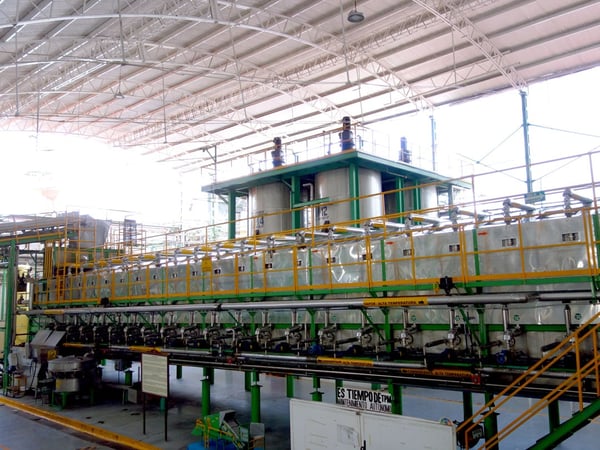
There are different processes to extract the sugar of a Tequilana Weber Blue Variety Agave. This sugar is the main ingredient in producing tequila. Each process has different characteristics. Discover how each of the extraction processes is carried out!
What processes are there to extract the sugar of a Tequilana Weber Blue Variety Agave?
There are three main processes to extract the agave's sugars:
- Mill grinding
- Tahona grinding
- Gentle extraction
This means that you can extract the agave's sugar by pressing the agave or utilizing water steam, the latter a much more gentle process (therefore its name: gentle extraction).
How does extraction by grinding work?
In this process, the agave is cooked first either in ovens or autoclaves. Once cooked, it is shredded by pressing the fibers, either by a mill or a tahona. It is from the juice extracted then the sugar is later obtained.
How does extraction by grinding in a mill work?
The fibers of cooked agave are placed in a mechanical mill, and, utilizing metallic rollers, a juice high in concentration sugars is obtained. These mills work with electric engines.
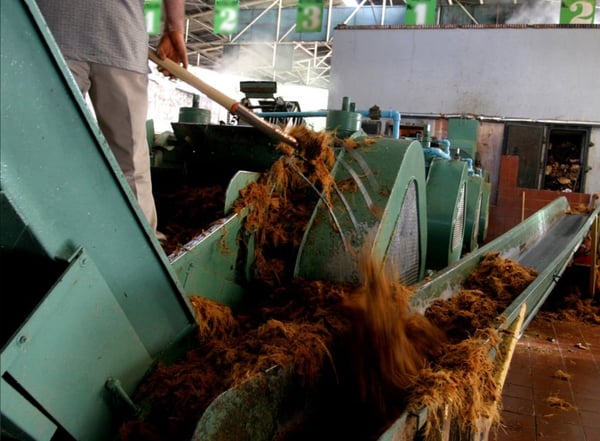
(CRT picture)
How does extraction by grinding in a tahona work?
In the case of tahona grinding, the cooked agave's fibers are placed on the floor inside a stone or concrete "tub." Using a wheel-shaped stone called tahona, the agave fibers are pressed. This wheel turns in circles, crushing the cooked agave and extracting its juice and sugars. The process of the tahona is the oldest one in the elaboration of tequila. The wheel used to be pulled in circles by load-carrying animals. Nowadays, most tequila plants that use this process have replaced animals with motorized vehicles, such as a tractor. (CRT picture)
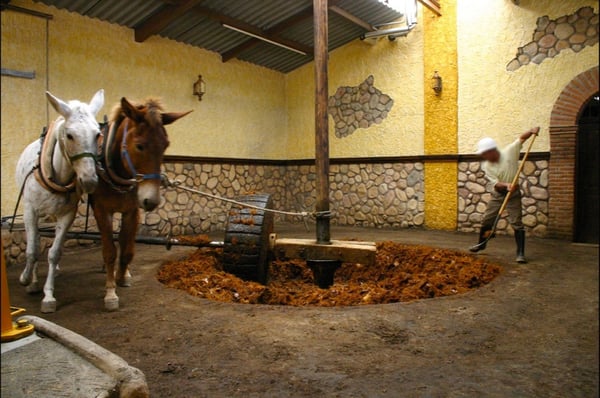
Foto del Consejo Regulador del Tequila
How does the gentle extraction of the agave's sugar work?
As we all know, the best solvent for sugar is water, so this kind of extraction works with the diffusion of water through the fresh agave fibers. This process is carried out by a device called a diffuser.
The diffuser allows us, thus, to extract the sugars from the agave in a more gentle way. The raw material is previously prepared before facing the extraction per se. The preparation is straightforward: the agave fibers are exposed and left as "open" as possible. This allows the maximum possible amount of sugars to be extracted (once these fibers make contact with the water).
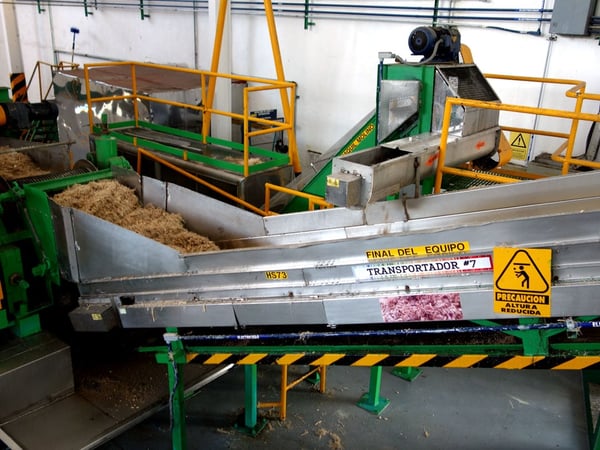
Therefore, the agave is not cooked first; it is processed raw in this process. As we've said, the whole agave pineapple is torn to leave its fibers as exposed as possible. Once this is done, they are exposed in the diffuser to a countercurrent cycle of hot (not boiling) water, which softly penetrates the fibers and extracts, thus, the sugar contained in them.
Inside the diffuser, the agave, which initially had a high concentration of sugars, makes contact with the hot water and transfers its sugars to it. The result is a juice with a high concentration of sugar.
A water extraction process takes place at the end of the diffuser process. A mill removes the moisture from the leftover bagasse.
This is basically how the diffuser works.
Each process will provide different characteristics to the final product, whether it is tequila or 100% tequila. At Casa Sauza, we have decided to use the gentle extraction process.
Know more about our tequila production processes by clicking on the links below:
Why Implementing a TPM Program in Agriculture?
Improving our Processes With the TPM Value
Come and visit Casa Sauza so you can learn how the modernization of our production processes delivers the purest tequila you will find in the market.
.png?width=50&height=50&name=10.CS-Redondo%20(1).png)
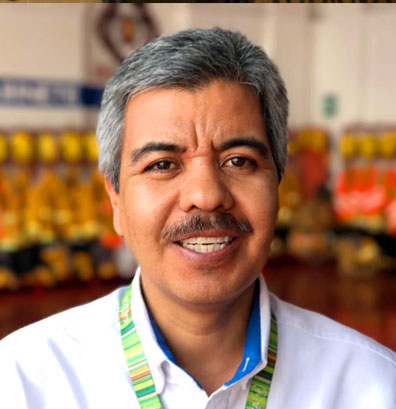 Rodrigo Nájar
Rodrigo Nájar